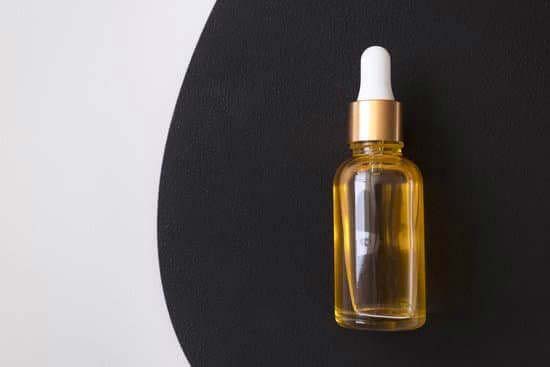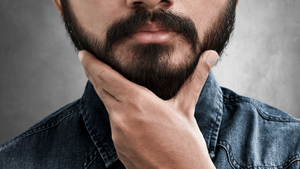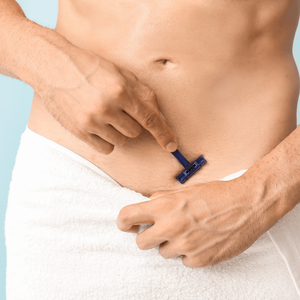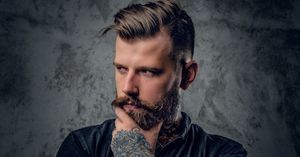What is Minoxidil?
Minoxidil is a topical solution, effective to slow or stop hair loss which eventually aids in hair growth. Minoxidil is one of the most common prescription-based solutions used to treat the various stages of male pattern baldness caused by sensitivity to testosterone. Surprisingly, Minoxidil is the only FDA approved topical medicine for hair loss. Though the exact mechanism is not clear it has shown significant improvement on these types of hair loss.
Some men also use minoxidil to grow fuller beards.
Minoxidil is often used along with other treatments like PRP, nutritional supplements, hormonal therapy for improved hair growth and controlling excessive hair fall in cases where hair loss is due to nutritional deficiency, hormonal and stress-related causes.
To understand what is Minoxidil and its mechanism lets familiarize ourselves with certain basic terminologies of trichology.
- Hair follicle – Our hair strands grow from a seed-like bud called the hair follicle In a single follicle, we have multiple strands of hair, ranging between 1 to 4.
- Hair Fall is a phase of our hair growth cycle, which means it is normal for our hair to fall off and new growth to start. This new hair growth appears as a soft fuzz on the scalp in 2 to 3 weeks.
- Hair Loss would involve an underlying cause like hormonal imbalance, Hereditary, stress or nutrition. This would appear more like a patch or when the scalp is easily visible. This is when a Doctor’s intervention is required.
- Dihydrotestosterone is a chemical derivative of testosterone which plays a major role in hair loss in men and women. Sensitivity to DHT leads to androgenic alopecia which is commonly called as Male or female pattern baldness.
History of minoxidil
Initially, minoxidil was prescribed as an oral drug to treat high blood pressure in hypertensive patients, but as a side effect of the drug, the doctors observed that it had an effect on hair growth around the body. It was noticed that minoxidil caused increased growth and darkening of fine hair. Further studies were conducted on minoxidil, and the topical solution was formulated for hair growth. 2400 patients were evaluated across 27 centres in the USA to confirm that 2% minoxidil solution could aid in the hair growth for patients experiencing androgenetic alopecia. Finally, in 1982 the US FDA gave a green flag to minoxidil after confirming that the topical application of minoxidil has no effect on blood pressure.
How does minoxidil work?
Minoxidil is a vasodilator i.e. it expands the blood vessel hence helping/ increasing the supply of important nutrients to the follicle which complements the process of hair growth. The key ingredient that helps the hair grow is Minoxidil sulphate which is activated by an enzyme found in our body called sulfotransferase. The amount of sulfotransferase found in the body can be responsible for the effectiveness of Minoxidil. Both 2% and 5% Minoxidil have shown remarkable results in reducing the amount of hair fall.
While using minoxidil, initially your weak hair follicles will fall out. This paves way for new strong hair follicles to grow. This is called minoxidil shedding. Though this is extremely common, people are often alarmed and wonder if minoxidil causes hair loss.
What makes Minoxidil more potent?
Minoxidil enriched with Procapil:
Procapil is a newer found active ingredient is a herbal complex containing natural active components used for the treatment of hair fall. This herbal complex combines apigenin and oleanolic acid that has shown to have a direct action on DHT. It deters the synthesizes of DHT from testosterone. While minoxidil affects follicular cells by promoting hair growth and decreasing the rate of hair fall; Procapil blocks DHT to prevent hair fall. Minoxidil, when enriched with Procapil, has shown great results, also reducing the overall percentage of Minoxidil used on hair. Hence, Minoxidil and Procapil in combination provide a complete treatment for hair loss.
Switch to non-alcohol based minoxidil solution:
The alcohol-based minoxidil solution is known to cause a lot of dryness, irritation and flaking on the application area. Alcohol-free formulation helps in reducing these side effects.
Possible side effects of minoxidil
Minoxidil in its topical form is relatively a safe medicine but despite that, some patients might face a few of the following symptoms in certain extreme situations
Itching and scaling may be caused due to minoxidil
In some cases, there can be appearance of dandruff-like scales on the scalp or area used. This might require further interventions, but reduces once minoxidil is stopped.
Minoxidil can lead to unwanted hair growth
Minoxidil has a small amount of systemic absorption, which can lead to unwanted hair growth on the chin and side locks in women. This effect fades away once the treatment is stopped or the percentage of minoxidil is reduced.
Headache as a symptom of minoxidil
Since Minoxidil is a vasodilator, some clients complain of headaches or dizziness. These fade away after tapering the dose of Minoxidil.
Allergic Reaction as a symptom of minoxidil
In an extremely rare situation it may cause a generalized allergic reaction.
Here are some general guidelines for using minoxidil
- Wash your hands before applying minoxidil
- Minoxidil should only be applied as prescribed by the consulting physician.
- It is generally recommended that minoxidil is applied 2 times a day.
- It shows better results when applied on a clean scalp.
- Apply minoxidil with a dropper or spray, on an average 1 ml should be applied on the visible scalp.
- Do not lie down immediately after applying Minoxidil
- Do not wash your hair for at least 4 hours after application.
Explore Alcohol free minoxidil solution by Man Matters!
Shop Man Matters
Explore Alcohol free solution by Man Matters!
FAQs
After how long will I notice hair growth?
On average it takes around 2 to 3 weeks to appreciate fine hair growth. After 4 weeks of regular application, the growth is clearly visible.
Is this to be applied life long?
If minoxidil is being used to help the growth of hair due to some underlining cause like nutritional deficiencies, hormonal imbalance and stress then in such conditions if the root cause is taken care and even if the use of minoxidil is stopped, the hair fall would not be evident. But in case the treatment protocol is used for male or female Pattern baldness then the effect of minoxidil would wear off, and hair fall would be evident. It is important to understand that Minoxidil is relatively a safe drug for topical application when considered for long term use. Hence, it would not cause any harm if considered for long term use.
What are the realistic expectations?
In some cases, Minoxidil shows little effect, the cause of this is not known. But it is still recommended that the use of minoxidil should be continued with other treatment modalities to aid the growth of the hair.
Will minoxidil alter the length of my hair?
Minoxidil does not alter the length of your hair. Which means if your hair would usually grow by an inch it won’t suddenly start growing longer than that.
References
- E A Olsen, M S Weiner, E R Delong & S R Pinnell, May 1985; Topical minoxidil in early male pattern baldness- Topical minoxidil in early male pattern baldness - PubMed (nih.gov)
- J S Storer, J Brzuskiewicz, H Floyd & J C Rice, May 1986; Topical minoxidil for male pattern baldness- Topical minoxidil for male pattern baldness - PubMed (nih.gov)
- Minoxidil15Direct, October 28, 2018; Is There A Cure for Male Pattern Baldness?- Is There A Cure for Male Pattern Baldness? - Minoxidil 15 Direct
- Ervin Novak M.D, Thomas Franz, John T. Headington & Ronald C. Wester, May 2007; Topically Applied Minoxidil in Baldness- Topically Applied Minoxidil in Baldness | Request PDF (researchgate.net)















